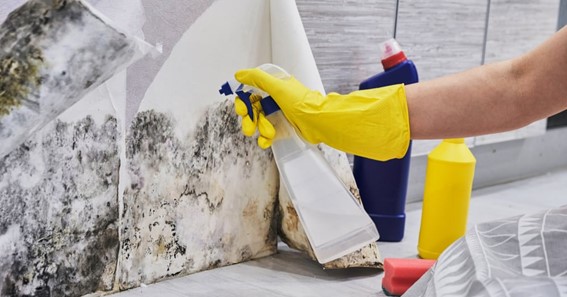Indoor quality of air and related health risks can’t be properly evaluated without first doing a mold test. Mold testing atlanta can be performed using a number of different sample collection techniques. The circumstances and potential mold contamination sources will dictate the approach taken. Some typical approaches to gathering samples are listed below.
1. Air Sampling:
- Spore Trapes: Mold spores in the air can be captured by using a spore trap, which has a sticky surface. They can help figure out what kind of mold spores are floating around and how many there are.
- Impaction Samplers: Mold spores can be grown and identified using impactors, which draw air onto an area coated with a nutritional medium.
- Cassette Samplers: Like spore traps, cassette samplers capture spores from mold on a filter for further microscopic analysis.
2. Surface Sampling:
- Swab Sampling: To gather mold from surfaces, sterile swabs with cotton tipped swabs are utilized for sampling. The swabs are subsequently examined and identified in a laboratory setting.
- Tape Lift Sampling: Transparent adhesive tape is placed across a surface to capture mold growth and settled spores for sampling in the Tape Lift method. A microscope is then used to analyze the tape.
- Bulk Sampling: Moldy building materials (such sheetrock and insulation) can be tested in a lab using a technique called “bulk sampling.”
3. Dust Sampling:
- Dust Collection: The third step is to gather dust samples by utilizing a dust sample cassette and a vacuum system with a filter to collect the dust from the surfaces. Mold spores along with other particles that have settled can be detected using this method.
4. Sampling for both Moisture and Material:
- Swelling Cavity Sampling: To check for mold growth, moisture is extracted from building materials using tools like swelling cavity samplers.
- Gypsum Wallboard Core Sampling: Removal of a core sample from gypsum wallboard allows for inspection of the back for signs of mold growth.
5. Dust Mite Collection:
Dust mites are a prevalent source of allergies found indoors, and mold and dust mites can coexist. The testing for dust mites requires the utilization of specialized dust collecting instruments in order to collect dust samples from a variety of surfaces and locations that are prone to the deposition of dust.
6. Bulk Material Testing:
Testing of Contaminated items in Bulk, In addition to taking samples from greater quantities of items that are thought to contain mold, bigger sections of contaminated materials, like a section of a wall or ceiling that has been damaged by water, can be transported to the laboratory for testing.
7. The Viable and Non-viable Sampling:
In viable sampling, live mold spores which are capable of developing are collected, whereas in non-viable sample, both live and dead mold spores are collected. The contrast between the numbers of viable and non-viable spores can provide further information regarding the status of the mold.
8. ERMI Sampling:
Testing with the Environmental Relatively Moldiness Index (ERMI) The Environmental Relatively Moldiness Index (ERMI) tests is a thorough procedure that employs DNA-based technology to examine dust samples for certain species of mold. It is frequently utilized in the process of determining the total mold load in a structure.
9. Sampling of Wall Cavities:
When there is reason to believe that mold growth is taking place inside wall cavities, taking a sample from the cavity itself is the appropriate course of action. This makes it possible to gather samples from inside the building’s walls without causing any significant harm to the structure. Hidden mold problems are able to be uncovered with the use of this method.
Click Here – Does Pressure Washing Damage House Paint?







